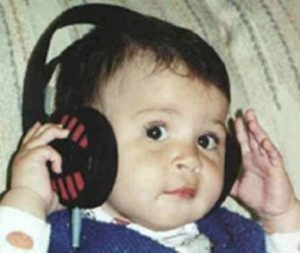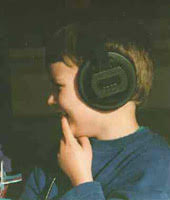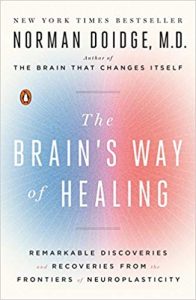Sound Tuning Ears and Body™**
Dr. Alfred Tomatis’ Auditory Integration Technique
Listening and movement coordination develop well before we are born. During the first half of pregnancy the fetus begins to experience and learn, listening to the mother’s voice and through their movement together.
 Dr. Alfred Tomatis has shown that, while in the womb, we incorporate and respond to the rhythm and melody of our mother’s voice. He demonstrated that this sound interaction influences our language skills, behavior, and movement development throughout our lives.
Dr. Alfred Tomatis has shown that, while in the womb, we incorporate and respond to the rhythm and melody of our mother’s voice. He demonstrated that this sound interaction influences our language skills, behavior, and movement development throughout our lives.
During infancy and early childhood intensive listening and movement learning processes occur. Often these developmental processes are disrupted by factors such as ear infections, emotional difficulties (adoption distress, etc.) , sensory-motor deprivation or overload, pre-, peri- and postnatal factors, and so on. In these cases the ear and movement control can not reach their full life-potential.
One of the leading causes of learning and developmental disorders (Dyslexia, ADD, PDD, Autism) is the reduced ability to neuro-cognitively process sound and listen well. Even during adolescence and adulthood, these fundamental capabilities can be enhanced and refined further. Our listening and movement skills profoundly influence the quality of our personal and professional lives.
Effectively Listening, Learning and Communicating With the Whole Body!™**
 Learning to effectively listen means not only learning to listen to what others say, but also to listen to our own thoughts and feelings. The ability to transition back and forth from the outside world to our inner voice is equally important in the listening process. This helps us organize what we perceive and feel in a meaningful manner.
Learning to effectively listen means not only learning to listen to what others say, but also to listen to our own thoughts and feelings. The ability to transition back and forth from the outside world to our inner voice is equally important in the listening process. This helps us organize what we perceive and feel in a meaningful manner.
Learning to filter and prioritize this interaction allows us to organize only relevant information and feelings for each situation. This skill enhances the way we learn and is especially significant in interactive group situations (class, work teams).
Dr. Tomatis was the first to propose that listening is distinctive from everyday hearing. Listening, as opposed to simply hearing, is an active, voluntary and complex process where we choose which information that we want to take in and which information we need to filter out in the context of every situation. For instance, when talking with someone, we are able to hear an airplane flying outside. We are able to continue to communicate without being interrupted or disturbed by the noise and are aware of the airplane’s presence but can focus without effort on the conversation.
Children and adults who visit us hear well but do not listen at their highest potential. These people benefit from learning how to listen efficiently so that they can improve their attention and their ability to process effectively. As Dr. Tomatis demonstrated, listening depends on an individual’s motivational attitude. Here we ask ourselves: “Do I want to listen or not?” Listening is also influenced by our emotional state. Some people try listening mindfully, expending a great amount of energy to do so. Still, they are unable to listen well (as opposed to simply hear well).
The Tomatis-developed Listening Learning Programs™ train our listening skills so that we can listen better. We will listen beyond what is being said to what it is being communicated overall. Cohesive listening provides us with better communication capabilities, enhancing our repertoire of learning strategies. This listening development can bring about positive changes in other aspects of a person’s life as well.
Supporting this new behavior included the development of a better listening posture, which will also help train during our listening program and further integrate throughout the intervention as well as in various movement activities we will also discuss.
Dr. Sacarin Listening, Movement and Development Center
To insure effortless, high-level academic performance our children need to work with their motor skills starting in infancy and early-childhood. From this basis, age-appropriate speech, language, and behavior will progress.
Dr. Jean Piaget, the Swiss child psychologist, recognized that sensory-motor intelligence provides the foundation for a child’s ability to abstract, generalize, analyze, and integrate the world around them. In other words, a child’s ability to communicate and learn is based on early, adequate sensory and motor-skill development and integration, as well as a stable emotional development.
 In our primary years we develop our verticality. We first turn and sit. Soon we crawl, stand and, finally, walk upright. In this process we learn to walk in a controlled and coordinated manner, balancing our pace with smooth, fluid motions. By the time of school-readiness our controlled vertical posture and well-coordinated movement should become stable and effortless. This optimally coordinated movement and vertical posture allows us to listen, communicate, act and interact independently.
In our primary years we develop our verticality. We first turn and sit. Soon we crawl, stand and, finally, walk upright. In this process we learn to walk in a controlled and coordinated manner, balancing our pace with smooth, fluid motions. By the time of school-readiness our controlled vertical posture and well-coordinated movement should become stable and effortless. This optimally coordinated movement and vertical posture allows us to listen, communicate, act and interact independently.
It is within this specific foundation that a wide range of movement and communications skills emerge. These include drawing or writing in school or performing complex and high-precision motor activities like playing the violin, figure ice-skating, flying an airplane, and multitasking. Balance and coordination movement are prerequisites to developing attention communication, learning or work skills. When working with the sound training approach developed by Dr. Alfred Tomatis we are taking advantage of neuroplasticity shaping not only listening but the entire motor learning abilities from their accuracy to their speed.
While some children or adults need to catch up in these areas, others come to us to attain peak performance in tasks which attention, speed, fine coordination are well timed and required. Furthermore, emotional balance between the sympathetic and parasympathetic autonomic nervous system also need to be at their optimum in order to perform in front of an audience as musicians are asked to do or compete in an athletic or a robotics competition. This approach is one of the avenues to help develop self-esteem and confidence, which are integral part of our ability to learn, communicate, perform, be flexible or problem solve.
Tomatis Listening Therapy: Individualized Treatment Requires In-Depth Evaluations
As noted there are various areas that could be addressed using Dr. Tomatis’ approach to learning, development and social-emotional competence. This leads to the fact that the more thorough the evaluation prior beginning the intervention, the better the chance to individualize the therapy plan for every child’s or adult’s needs when working with Dr. Tomatis’ sound stimulation approach. An in-depth evaluation can also help determine whether this is an avenue worth pursuing or whether other interventions are more suited for you or your child at this point in time. As a psychologist I consider that my role is also to educate you and your family about various options of treatment or training (if you are interested in peak performance) and point you or your child and in the right direction by making appropriate referrals to the practitioners that hold a particular expertise. Finally, some conditions require a team effort and a concerted approach to treatment, which are in the spirit of Dr. Tomatis’ work. While an ENT and surgeon, Dr. Tomatis worked closely with psychologists at his Centre in Paris and also integrated nutritional advice into his comprehensive intervention of the Tomatis Method. Today experts in various areas of human functioning can be part of the team to support your or your child to reach your goals and take the best route to engaging neuroplasticity.
 Although developed decades ago Dr. Tomatis intervention remains at the forefront of research and scientific investigation for neurodevelopment, attention and auditory processing. Given this continued interest it became the subject of Norman Dodges’ most recent book on neuroplasticity: The Brain’s Way of Healing. Dr. Doidge, a Canadian physician, dedicated a whole chapter to Dr. Tomatis’ work and method as a witness of changing and healing grace our brain’s plasticity. At the core of the chapter on Tomatis there is a detailed interview with Paul Madaule, who is the Toronto based psychologist, author and director of The Listening Centre. In this interview Paul, himself a Tomatis’ disciple and long time-collaborator who today holds the longest experience in working with the Tomatis Method, offers a comprehensive insight on how it was developed and it is applied.
Although developed decades ago Dr. Tomatis intervention remains at the forefront of research and scientific investigation for neurodevelopment, attention and auditory processing. Given this continued interest it became the subject of Norman Dodges’ most recent book on neuroplasticity: The Brain’s Way of Healing. Dr. Doidge, a Canadian physician, dedicated a whole chapter to Dr. Tomatis’ work and method as a witness of changing and healing grace our brain’s plasticity. At the core of the chapter on Tomatis there is a detailed interview with Paul Madaule, who is the Toronto based psychologist, author and director of The Listening Centre. In this interview Paul, himself a Tomatis’ disciple and long time-collaborator who today holds the longest experience in working with the Tomatis Method, offers a comprehensive insight on how it was developed and it is applied.
